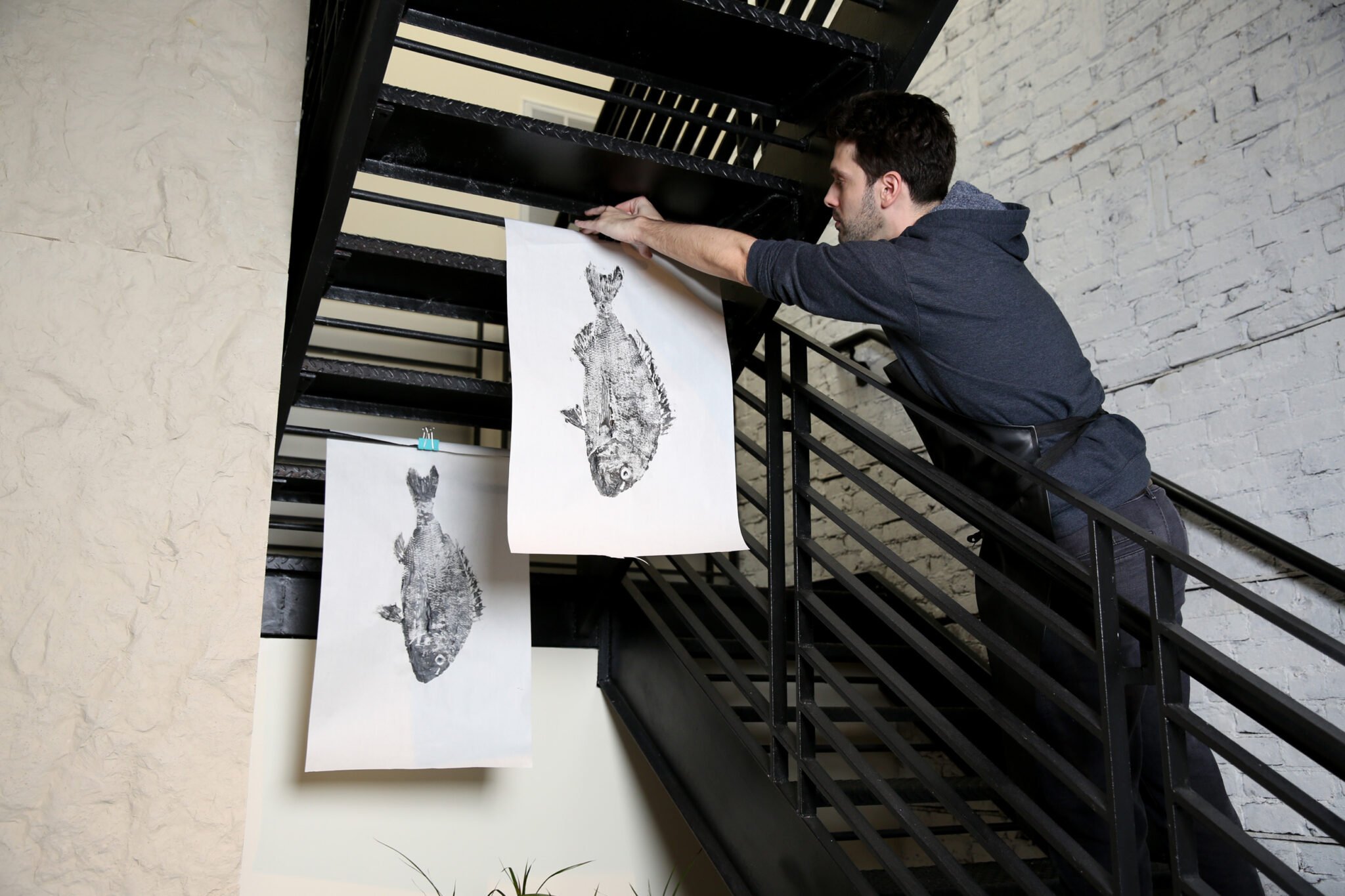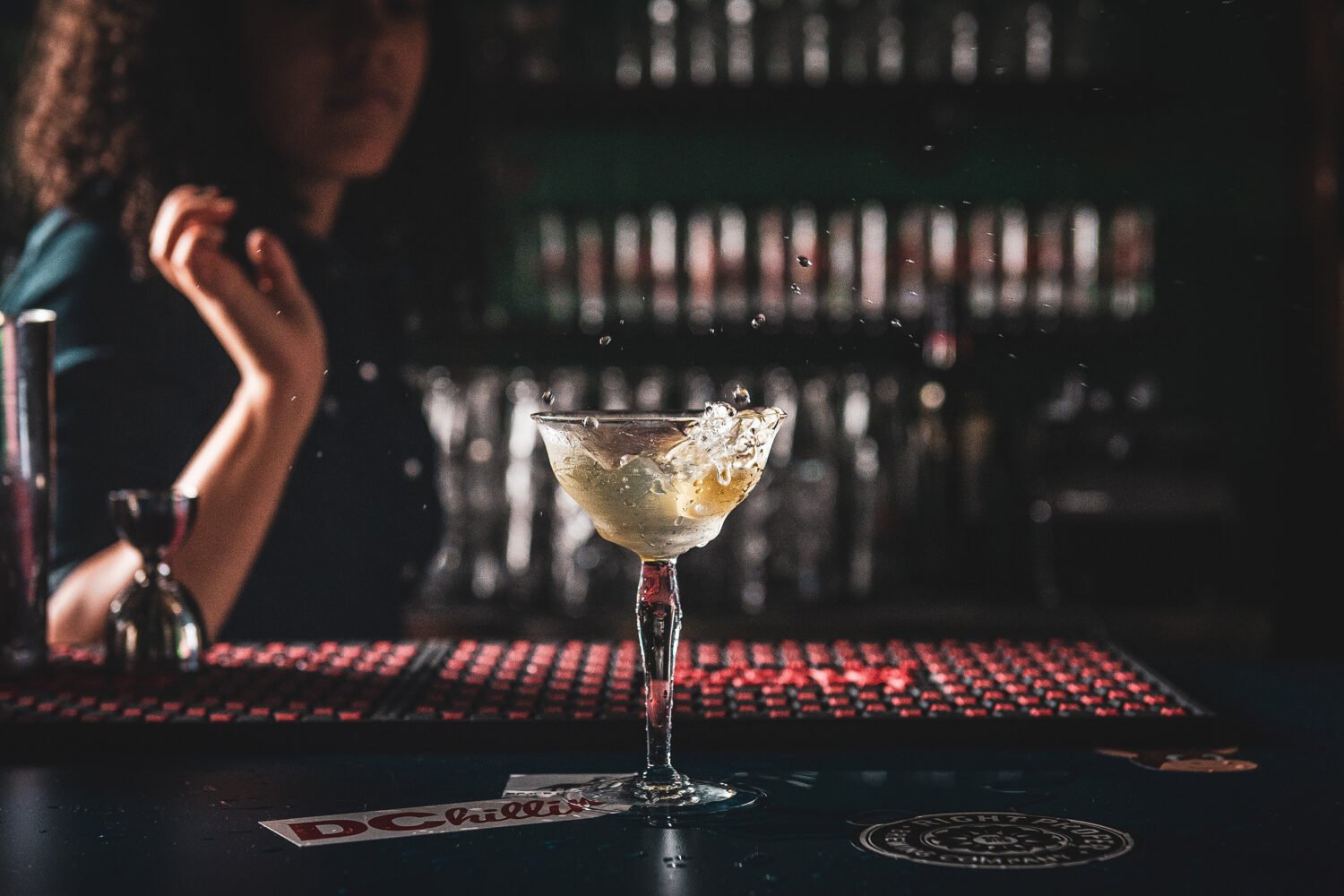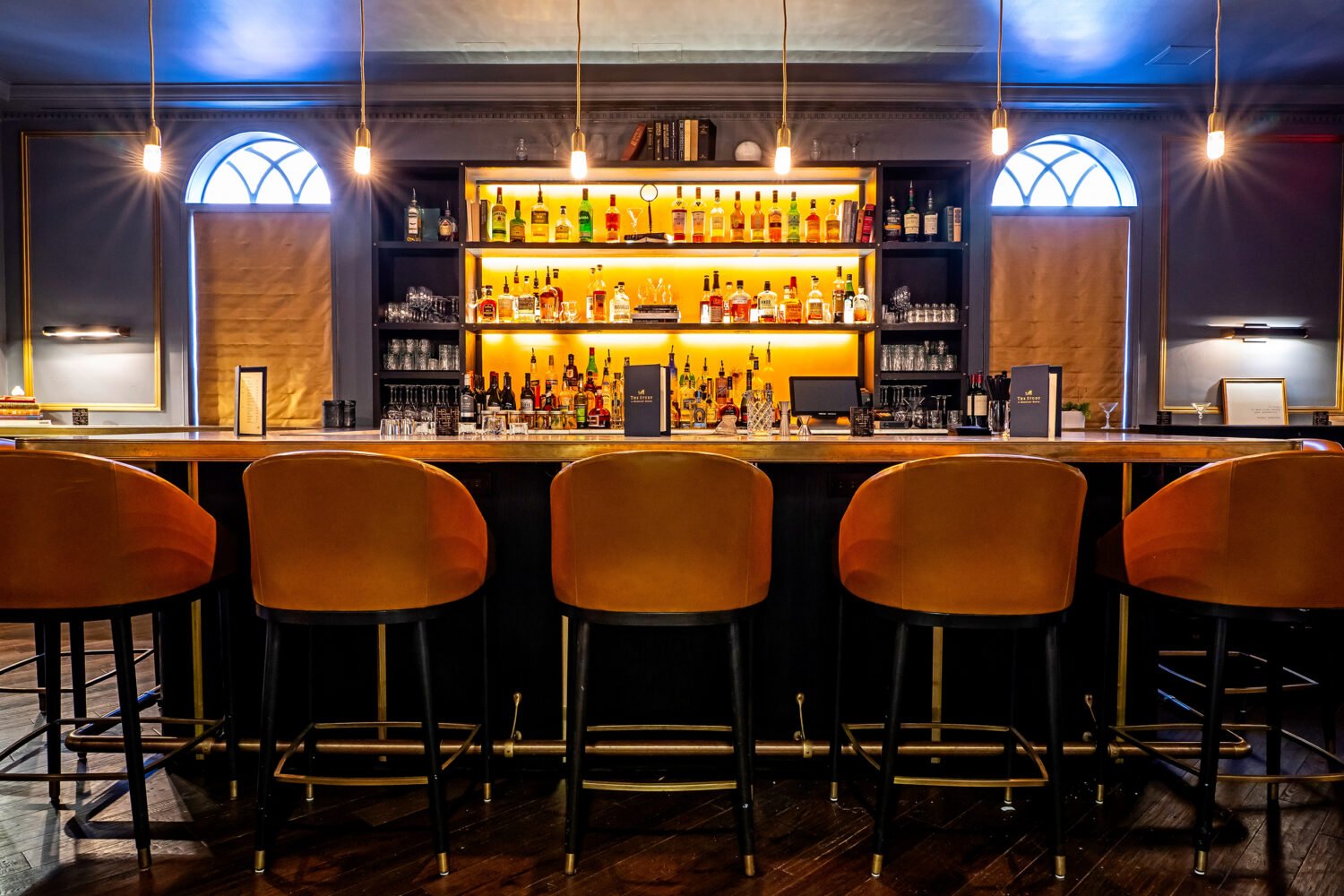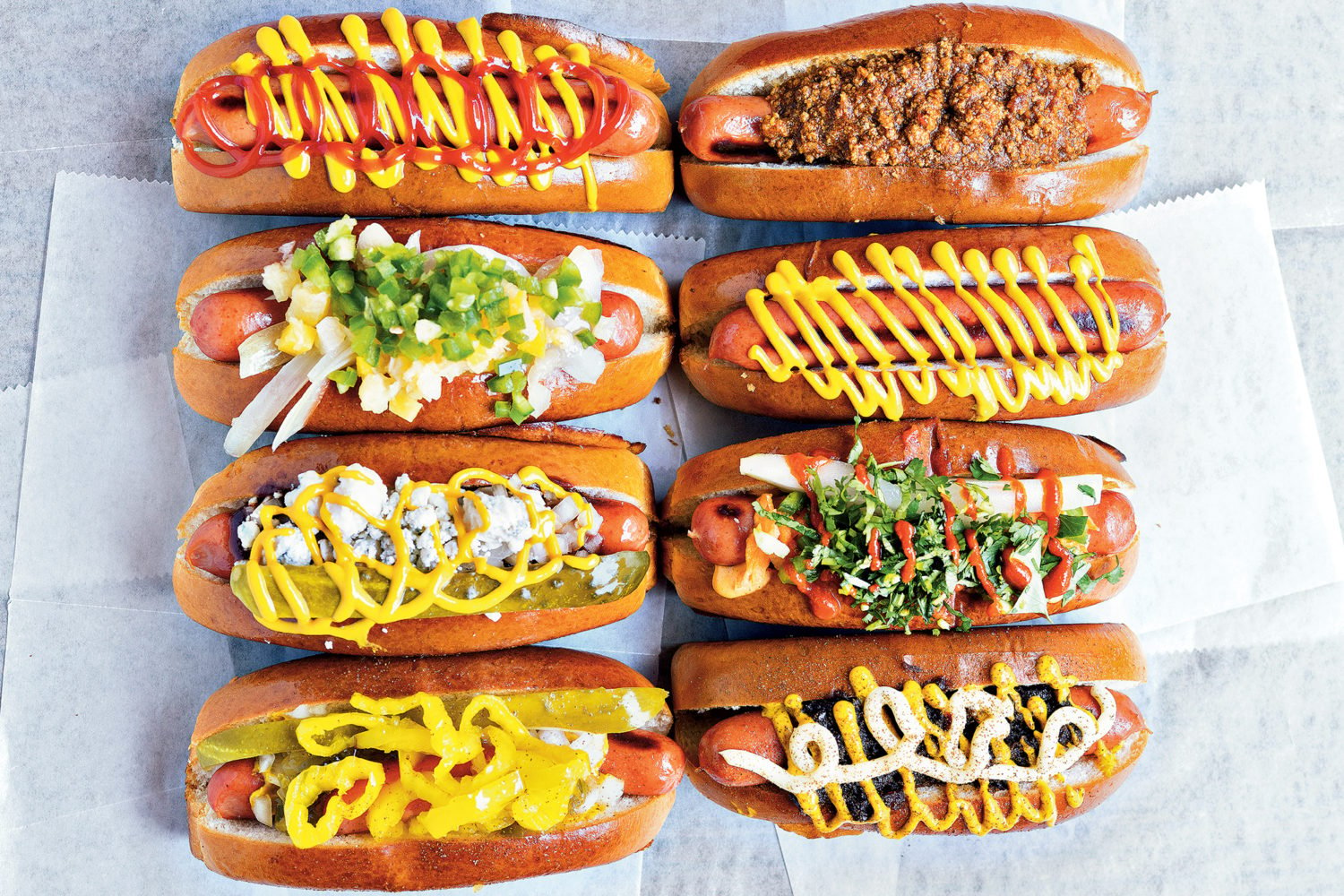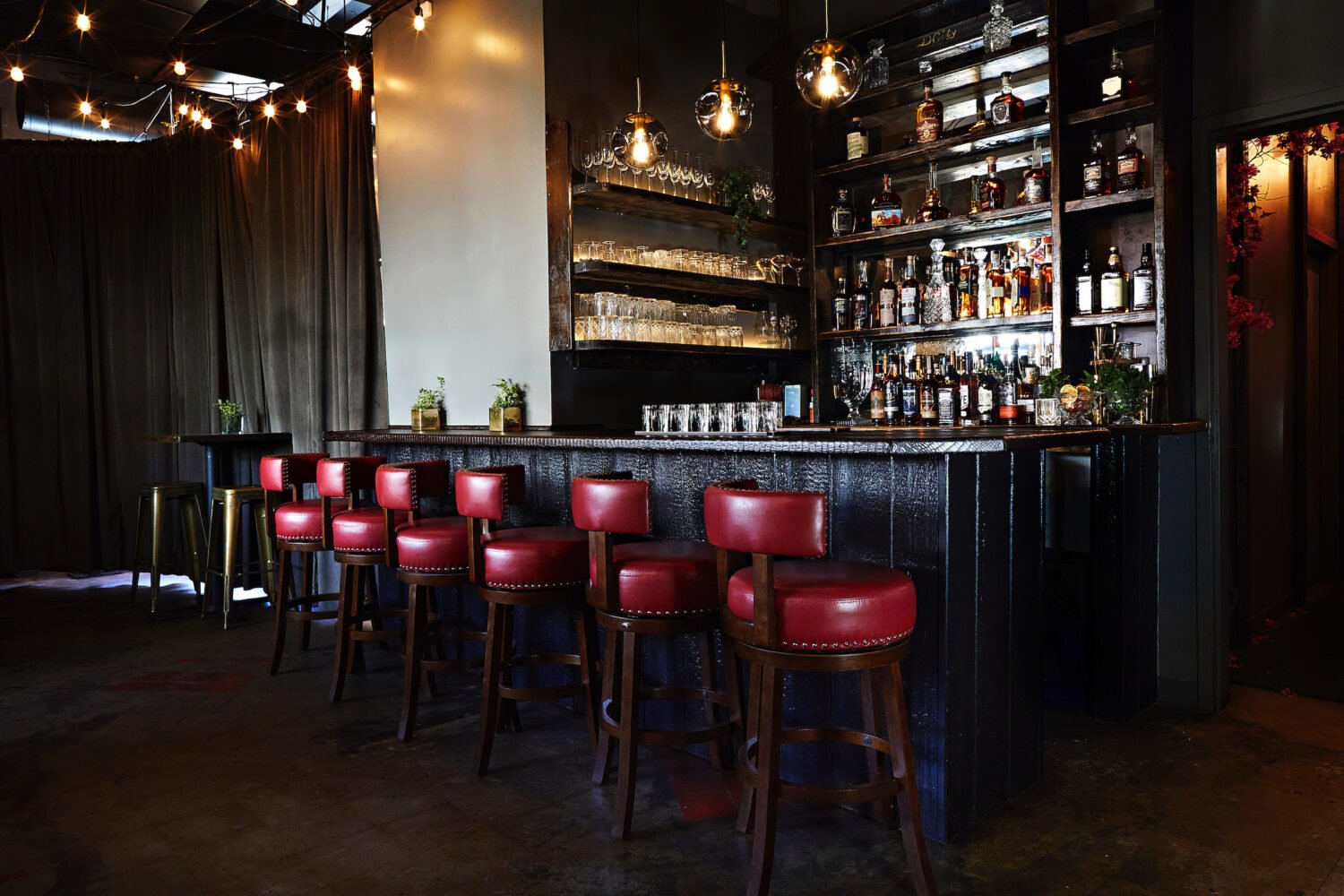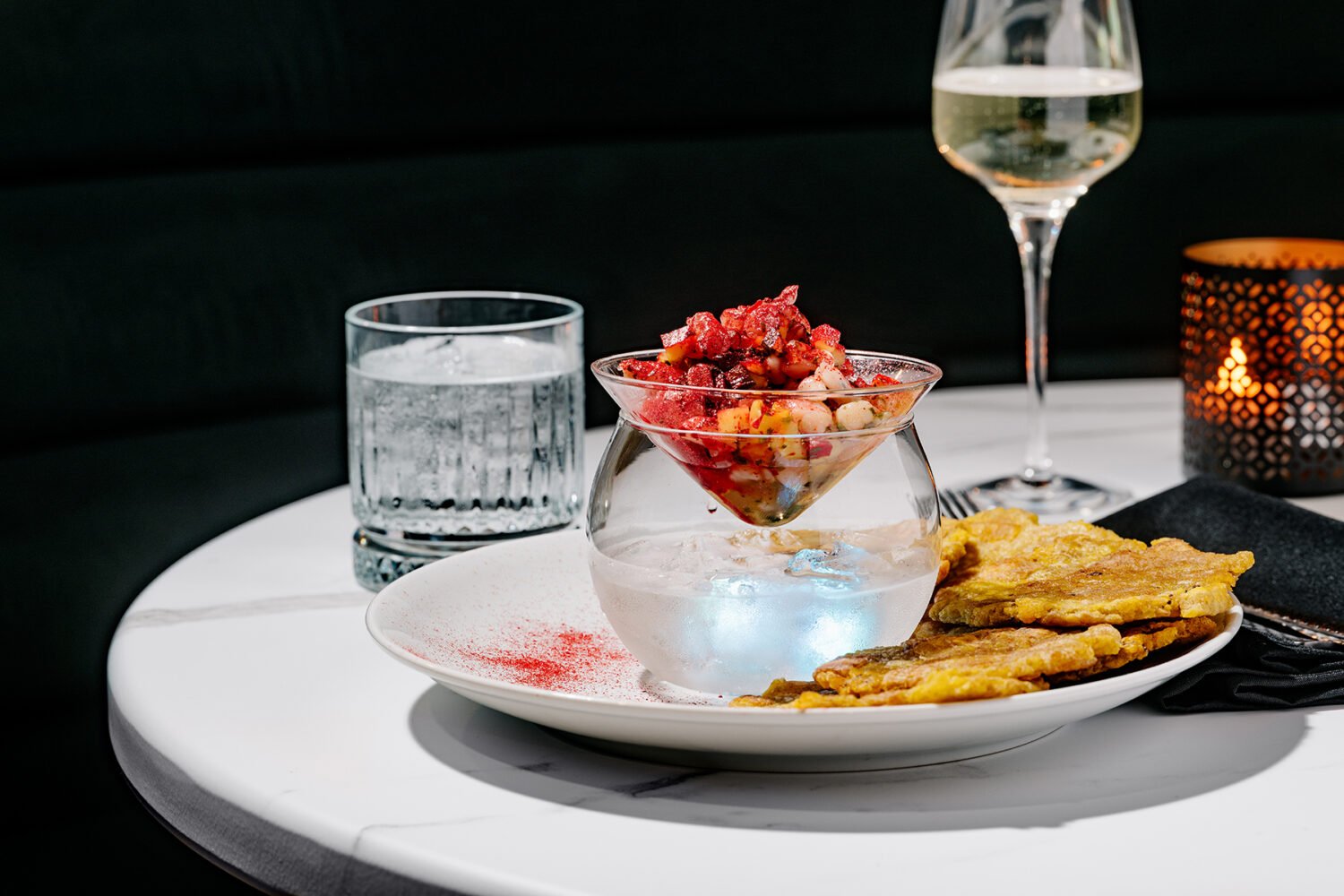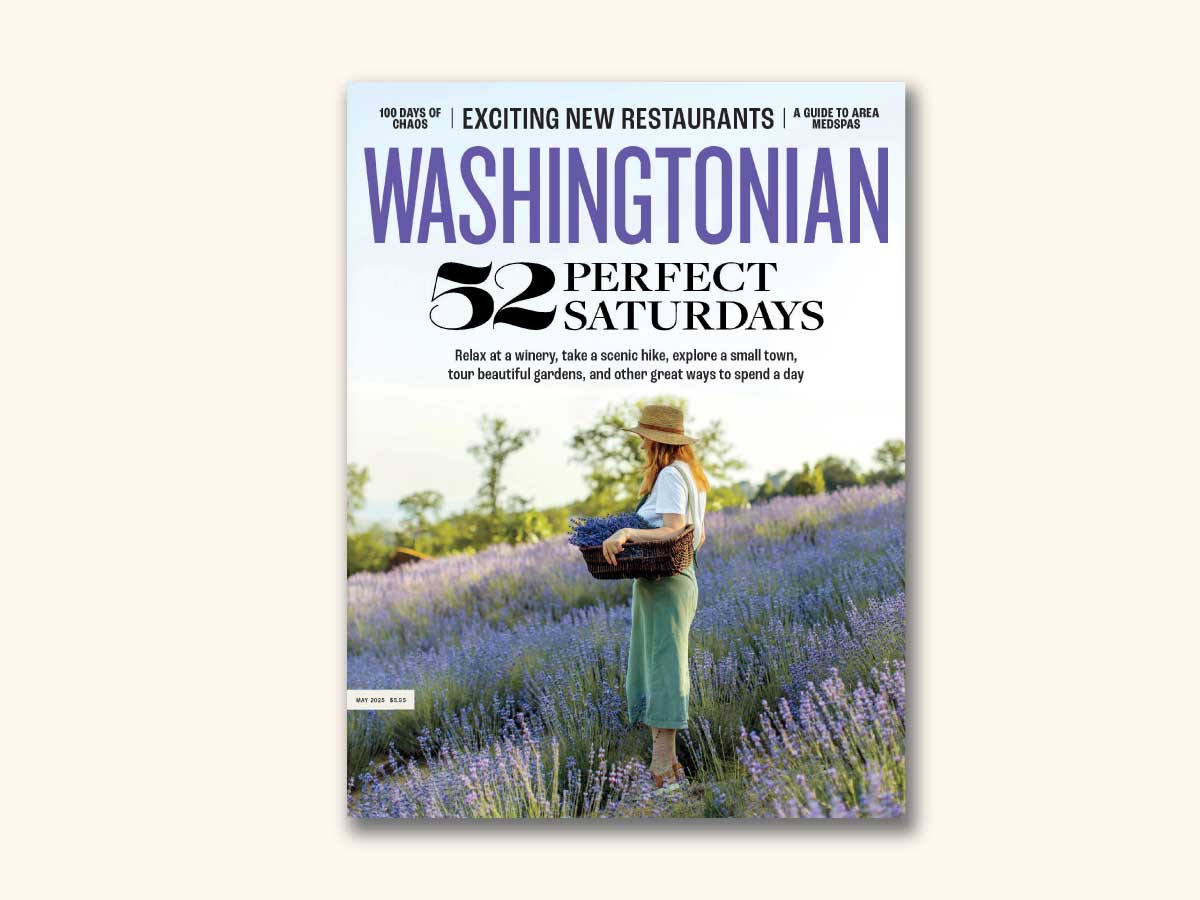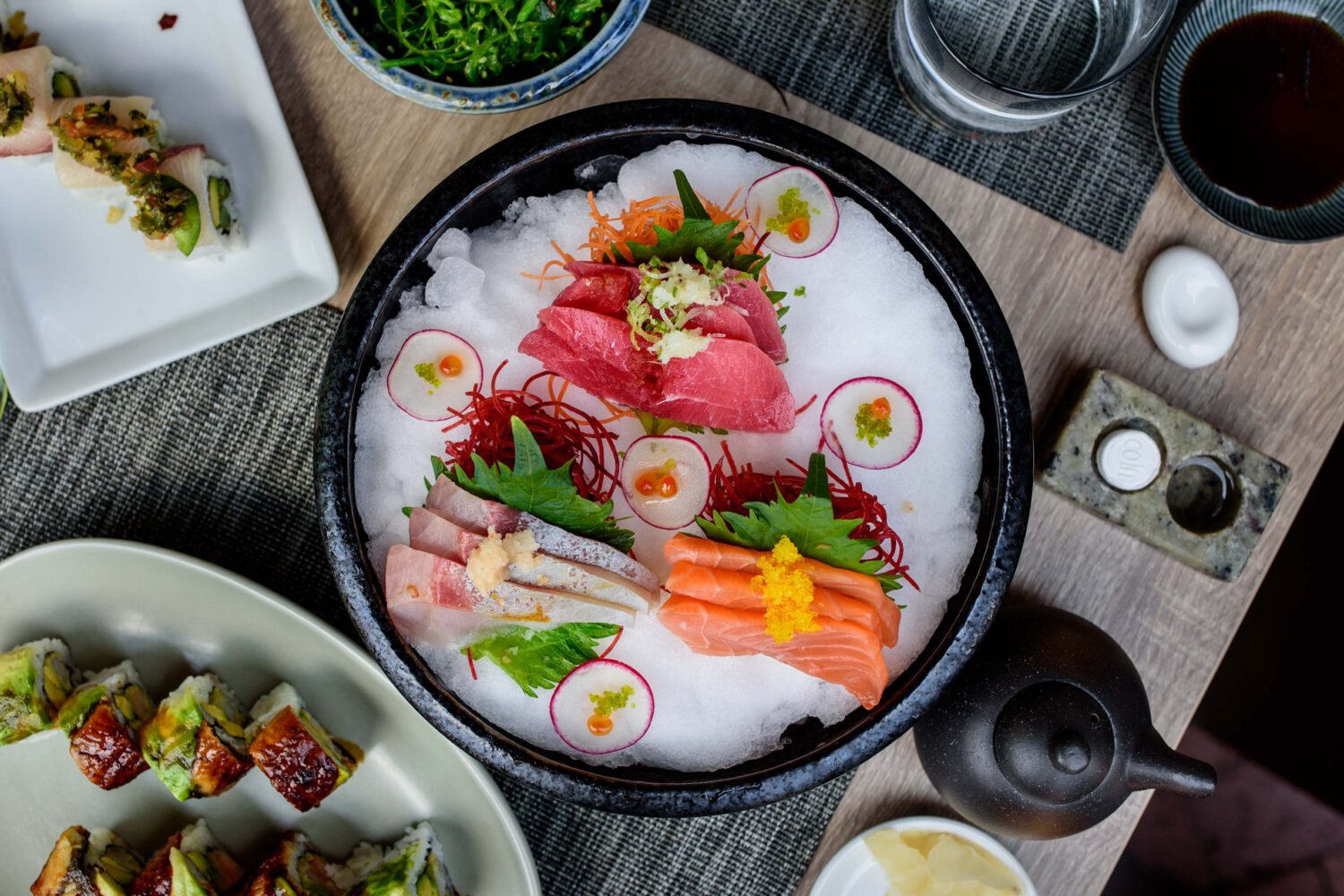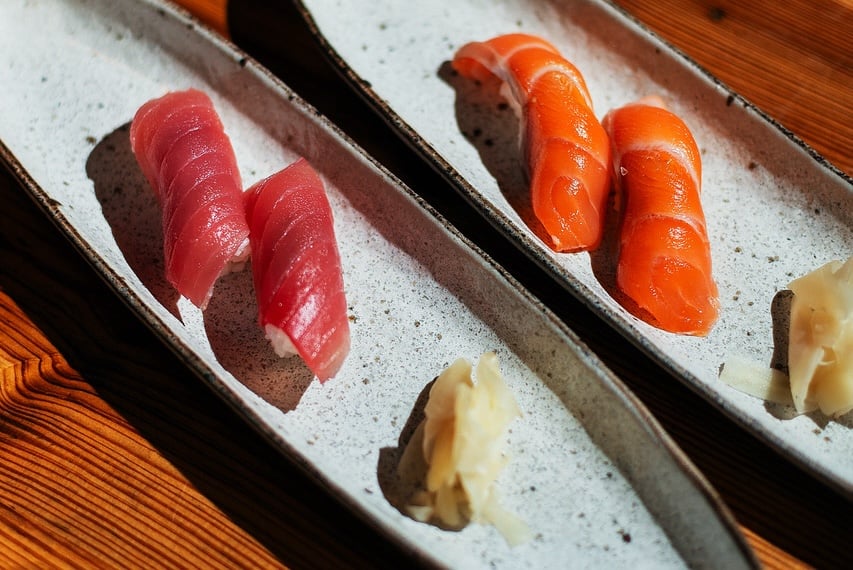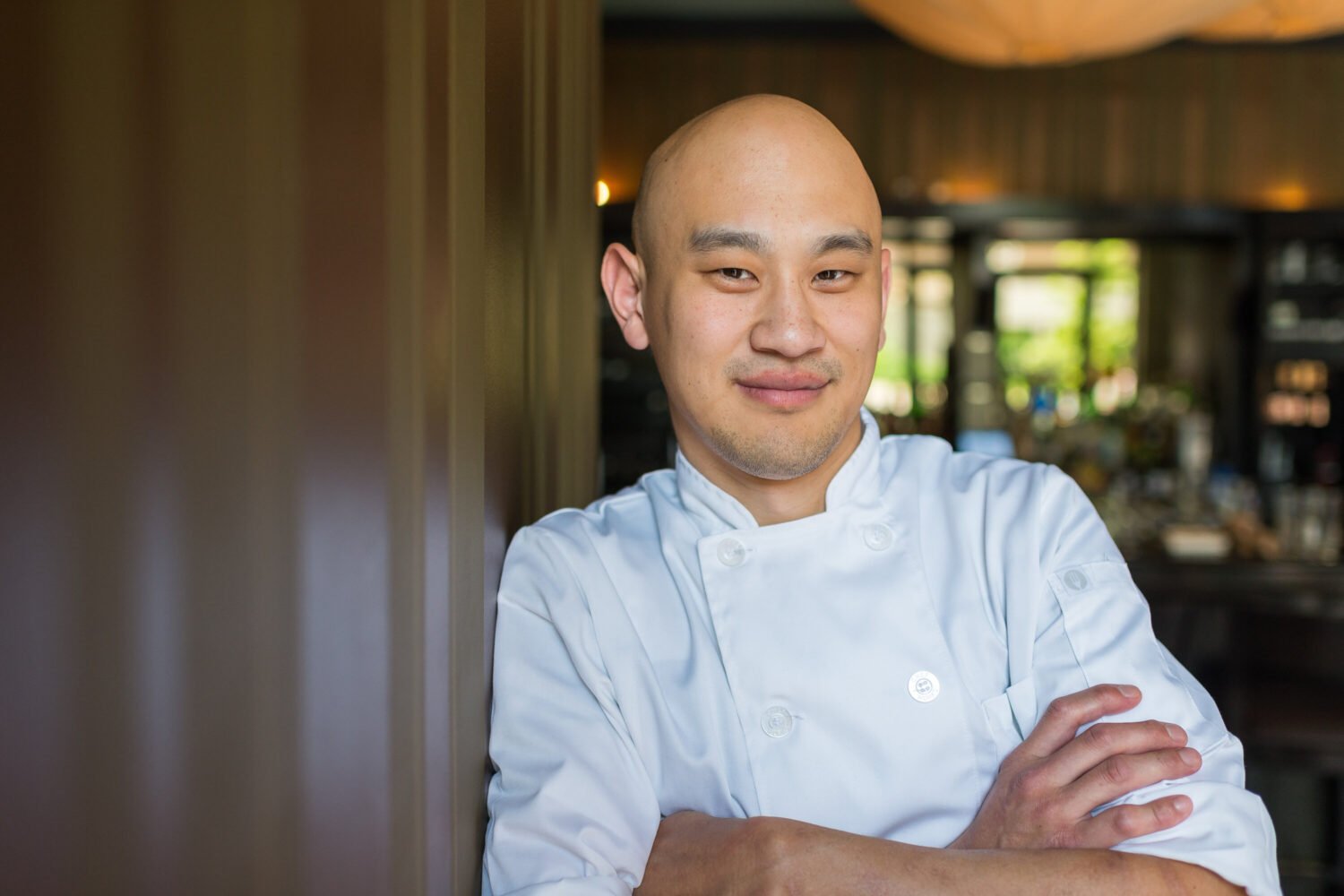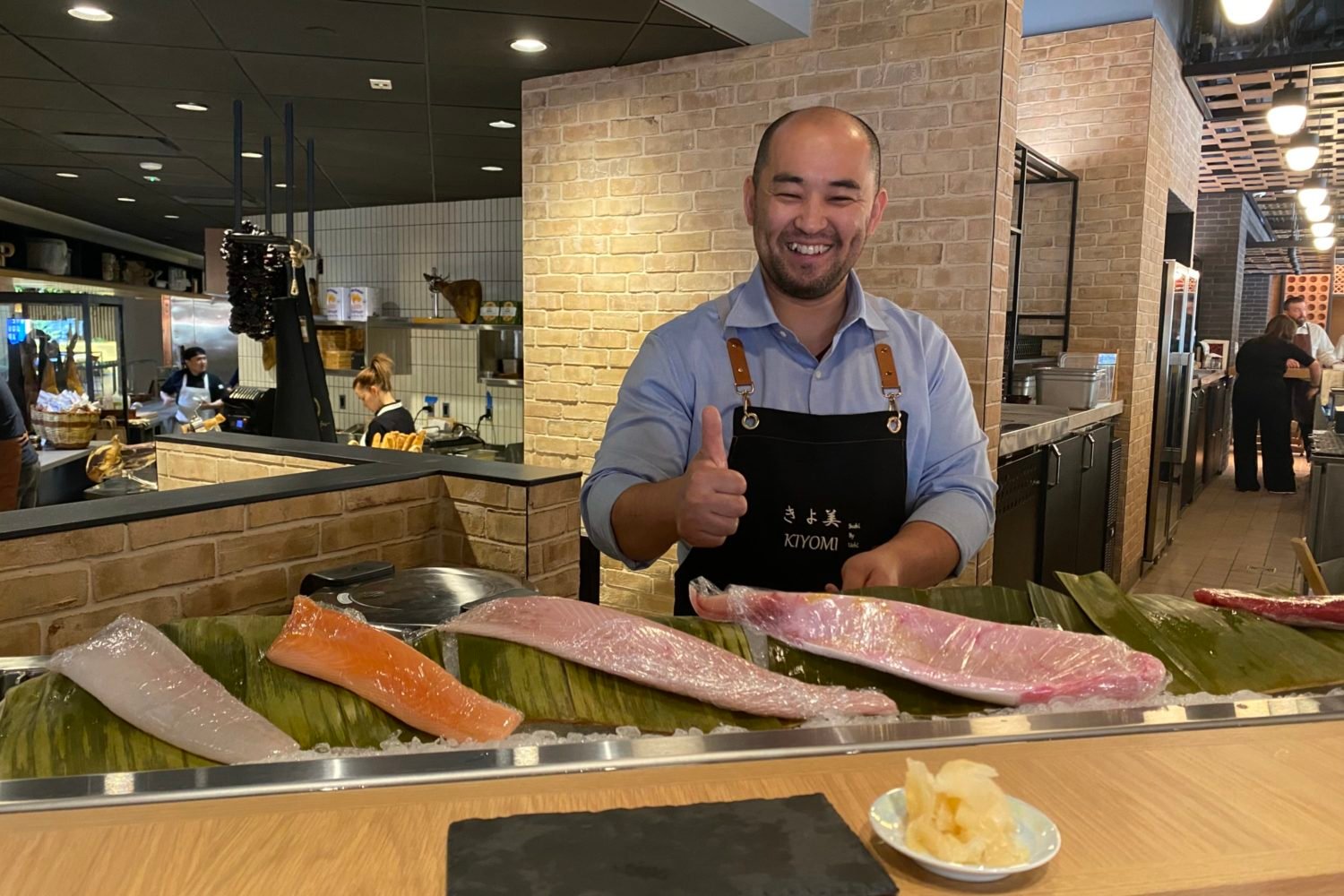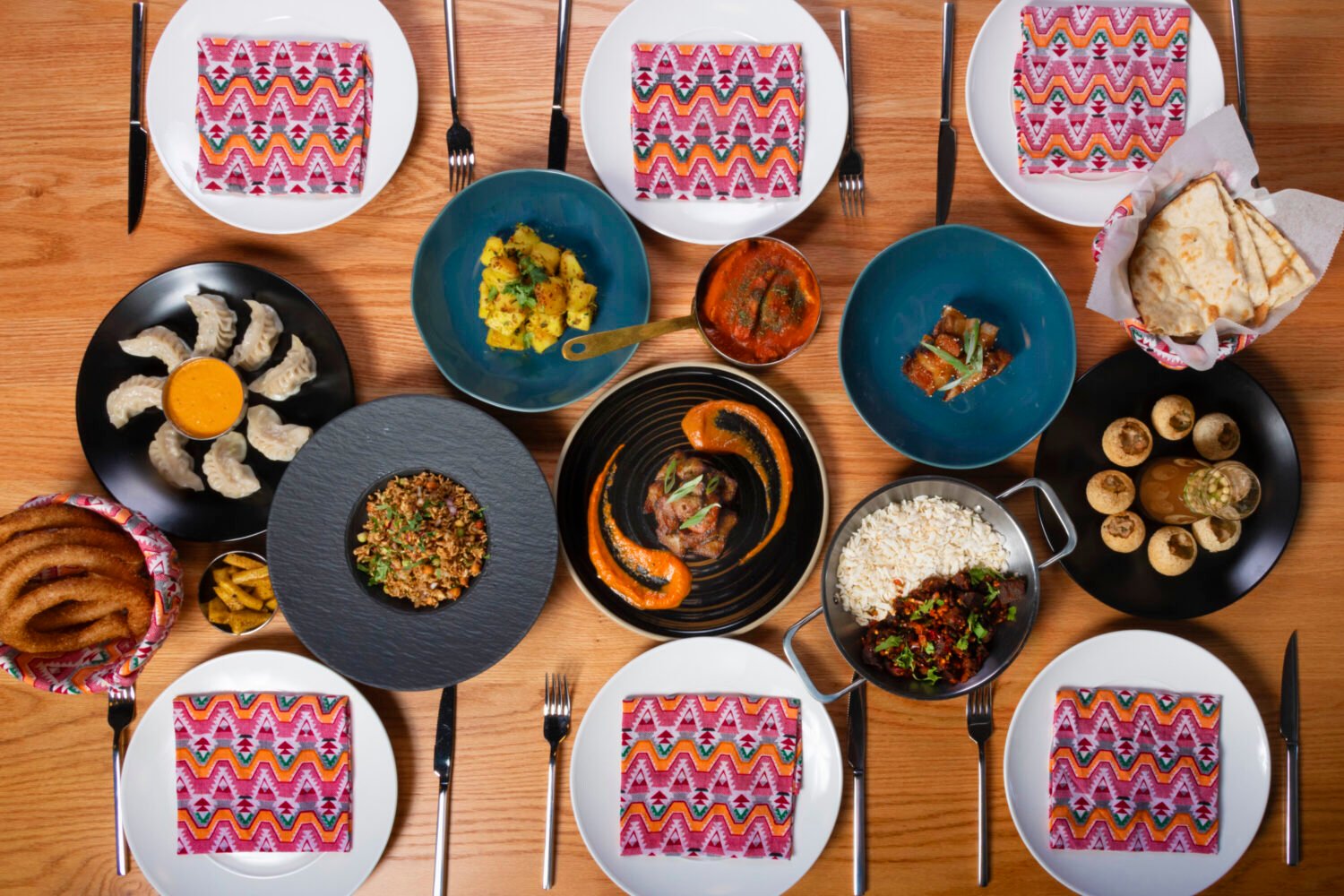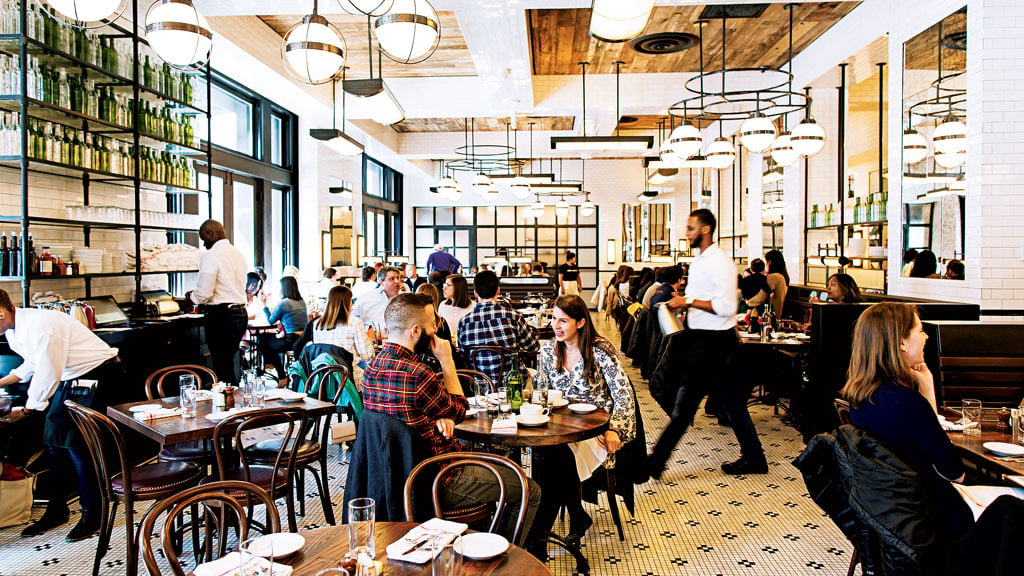As you enter the Capitol Hill sushi restaurant Omakase @ Barracks Row, the stairwell is lined with framed prints of Shizuoka rainbow trout, squid, and red cornetfish. Here’s how service director Gabriel Enjamio uses the Japanese art of gyotaku, or ink impressions, to create prints made from some of the whole fish that chef Ricky Wang later carves up for his 20-course omakase.
Shortly after a fish shipment from Japan’s Toyosu Market arrives at the restaurant on a recent Friday afternoon, chef Wang opens an ice-chilled box and pulls out a madai, or red sea bream. The fish is wrapped in newspaper from the day it was packaged to prove its freshness, but Wang will age this particular fish for three to five days to develop its flavor before serving it.
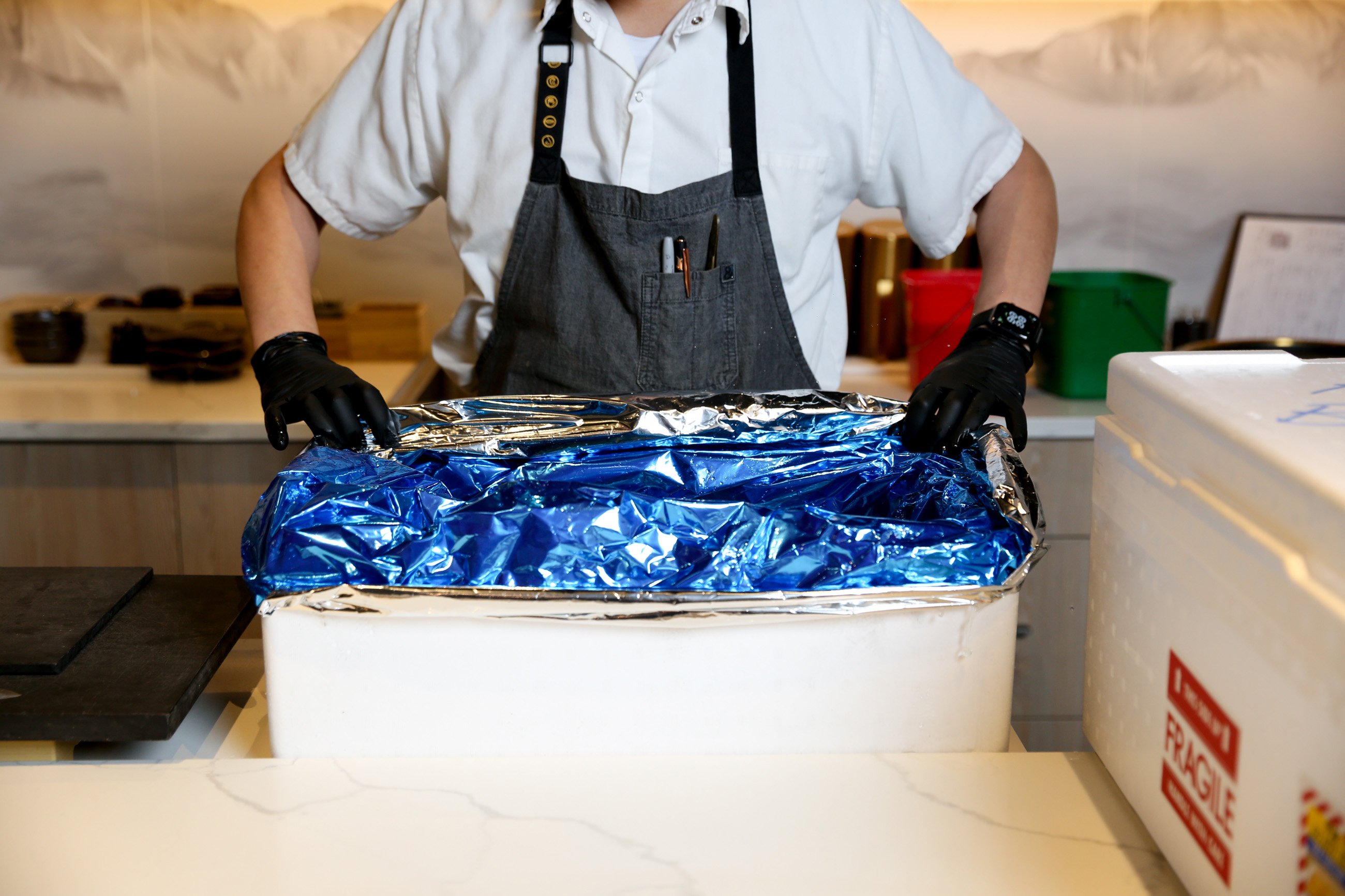
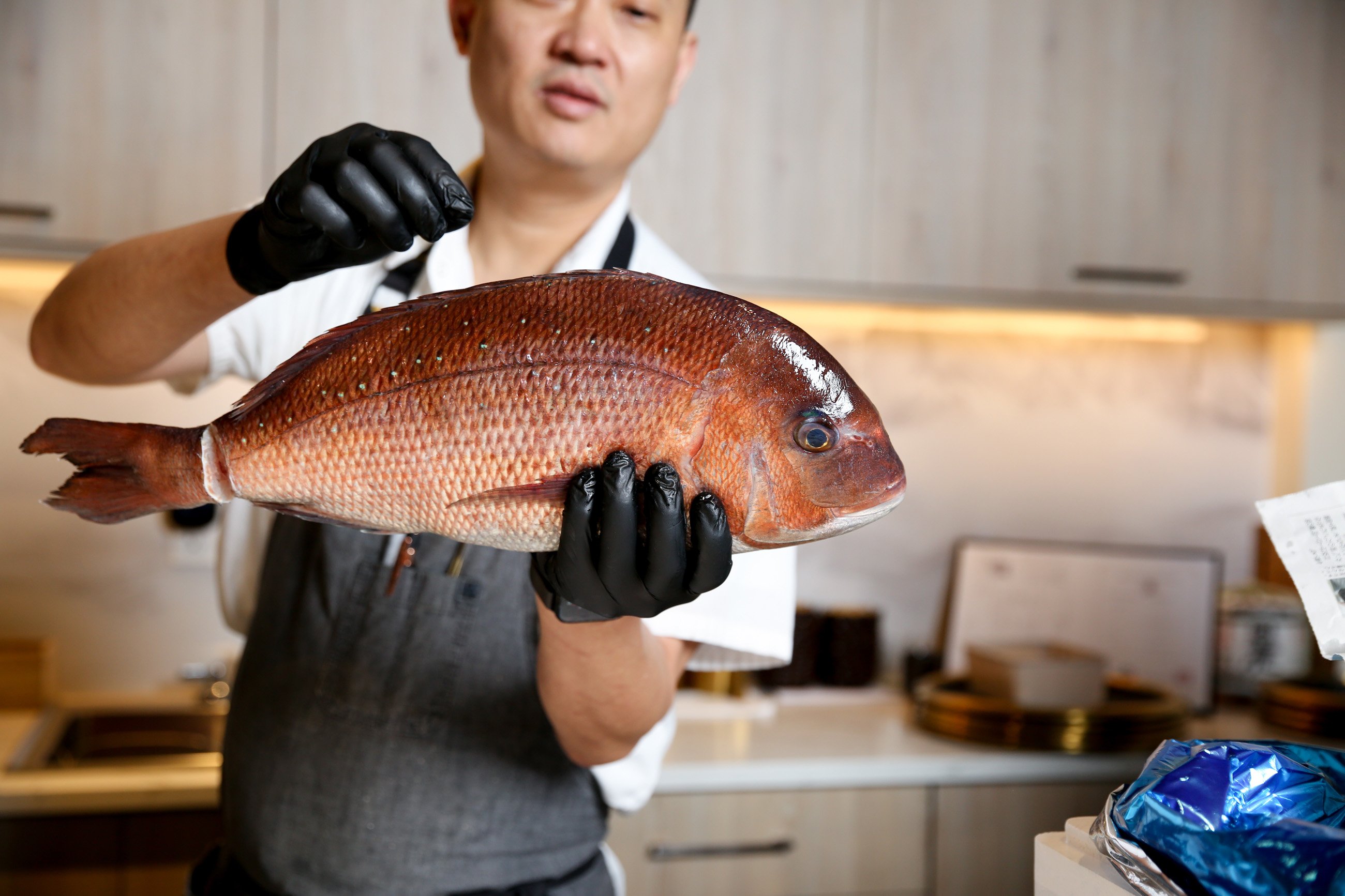
Enjamio coats the fish in edible black ink. Traditionally, gyotaku was done with charcoal or cuttlefish ink. “I’ve tried to do it, but I’m afraid that you still smell some of it,” Enjamio says. He paints the fish in the direction the water would flow while the fish is swimming. Often he’ll prop the mouth open with a toothpick, but this particular fish has very sharp teeth.
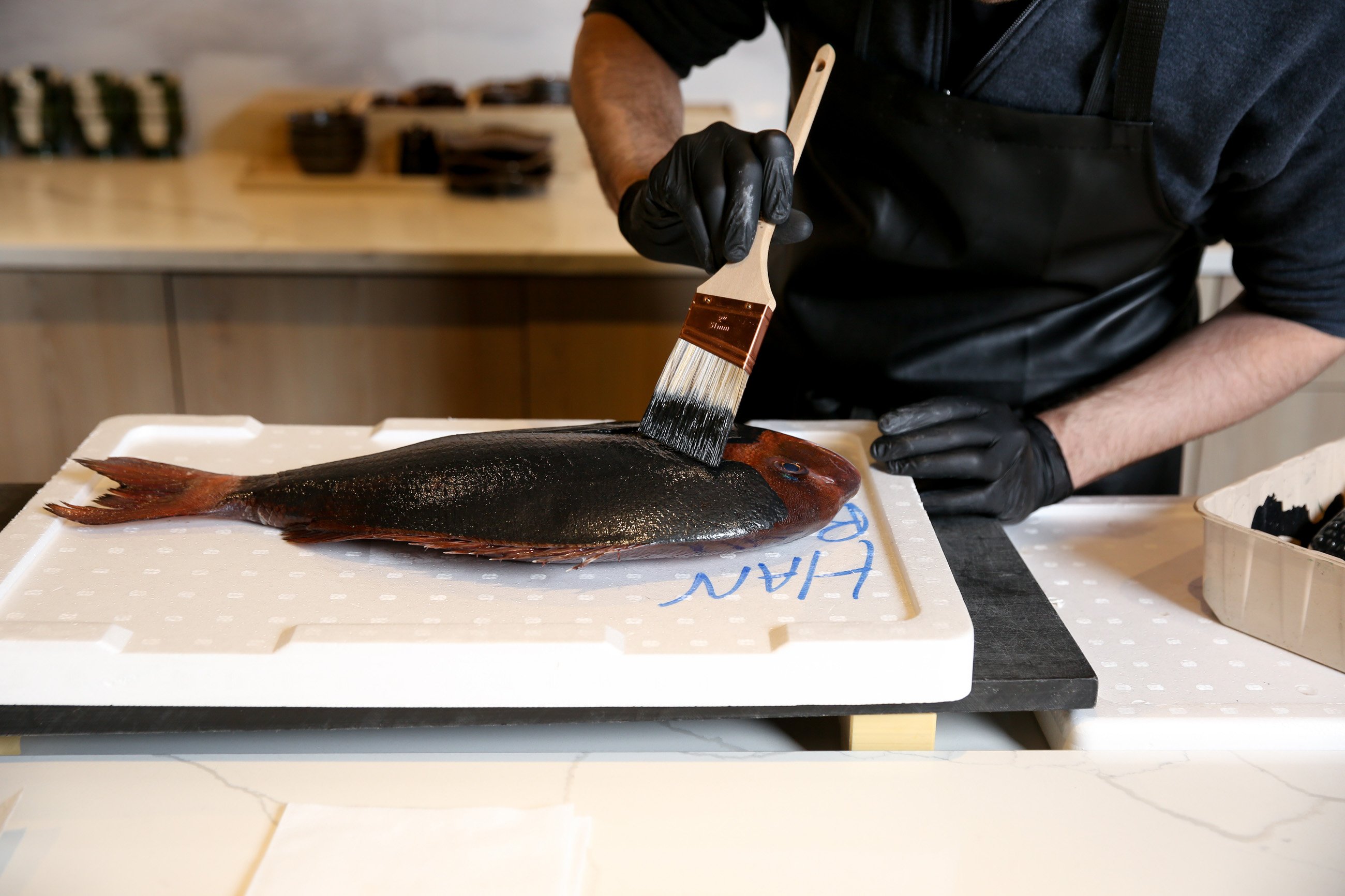
Too much paint and the rice paper will fall apart. Too little and the fish won’t leave a good impression. At most, Enjamio will create three prints of each fish. “You start to get diminishing returns, and at the end of the day, the fish is here for sushi,” he says, adding that he wouldn’t want to compromise the carefully sourced fish “for the sake of being able to play middle-school art teacher.”

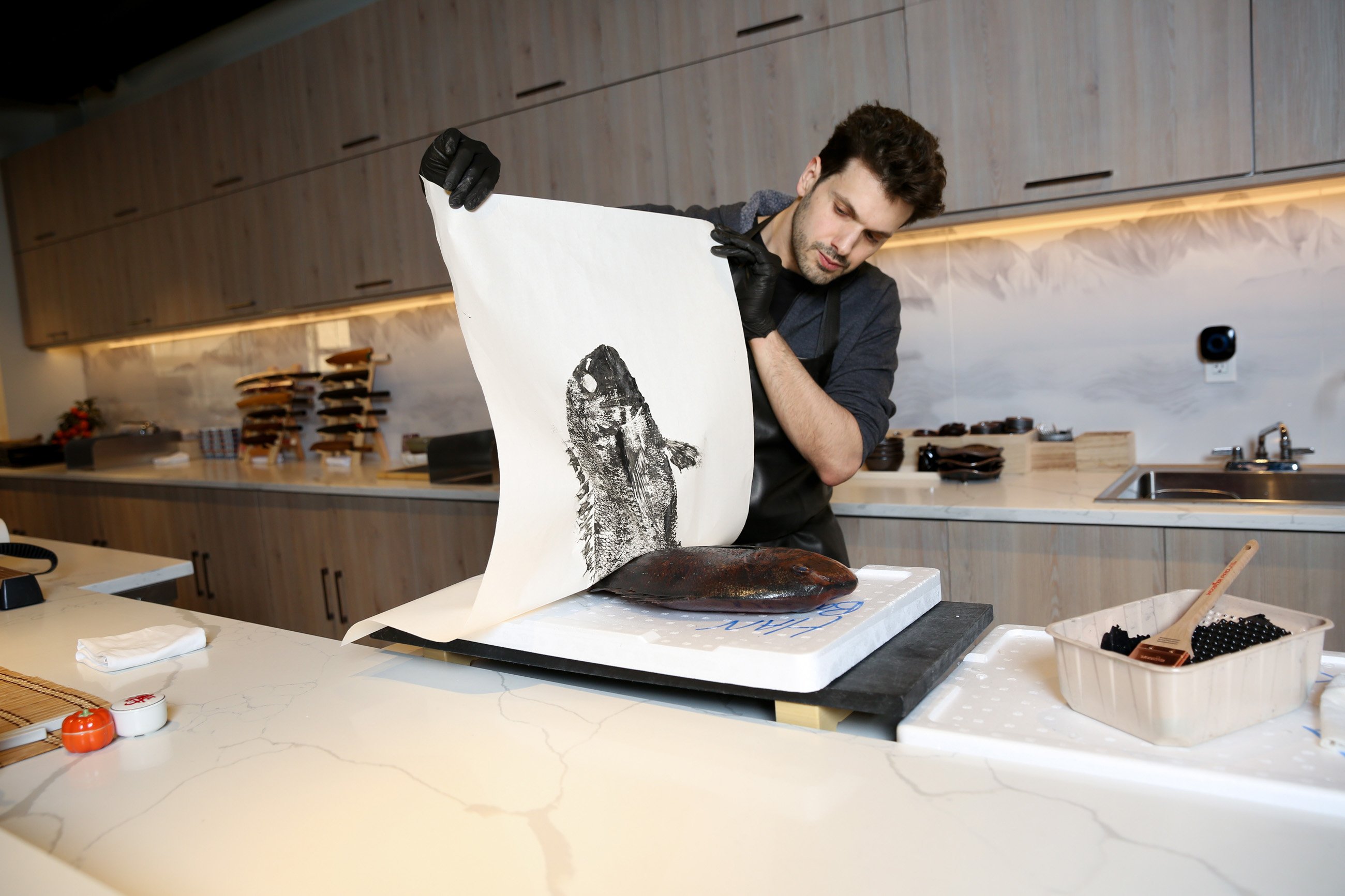
Enjamio hand-paints a pupil because the eyeball is too gelatinous to transfer ink. He’ll hang the print to dry under the stairwell before it joins a gallery of 15 or so others. He creates and adds a print whenever a new species of fish arrives at the restaurant. “Not to get morbid, but I want it to look like an edible Baltimore Aquarium,” he says. One of his most prized artworks is of a 200-pound tuna. A seafood wholesaler gave him special access to its Maryland tuna-processing facility to create the ink impression inside its cooler.
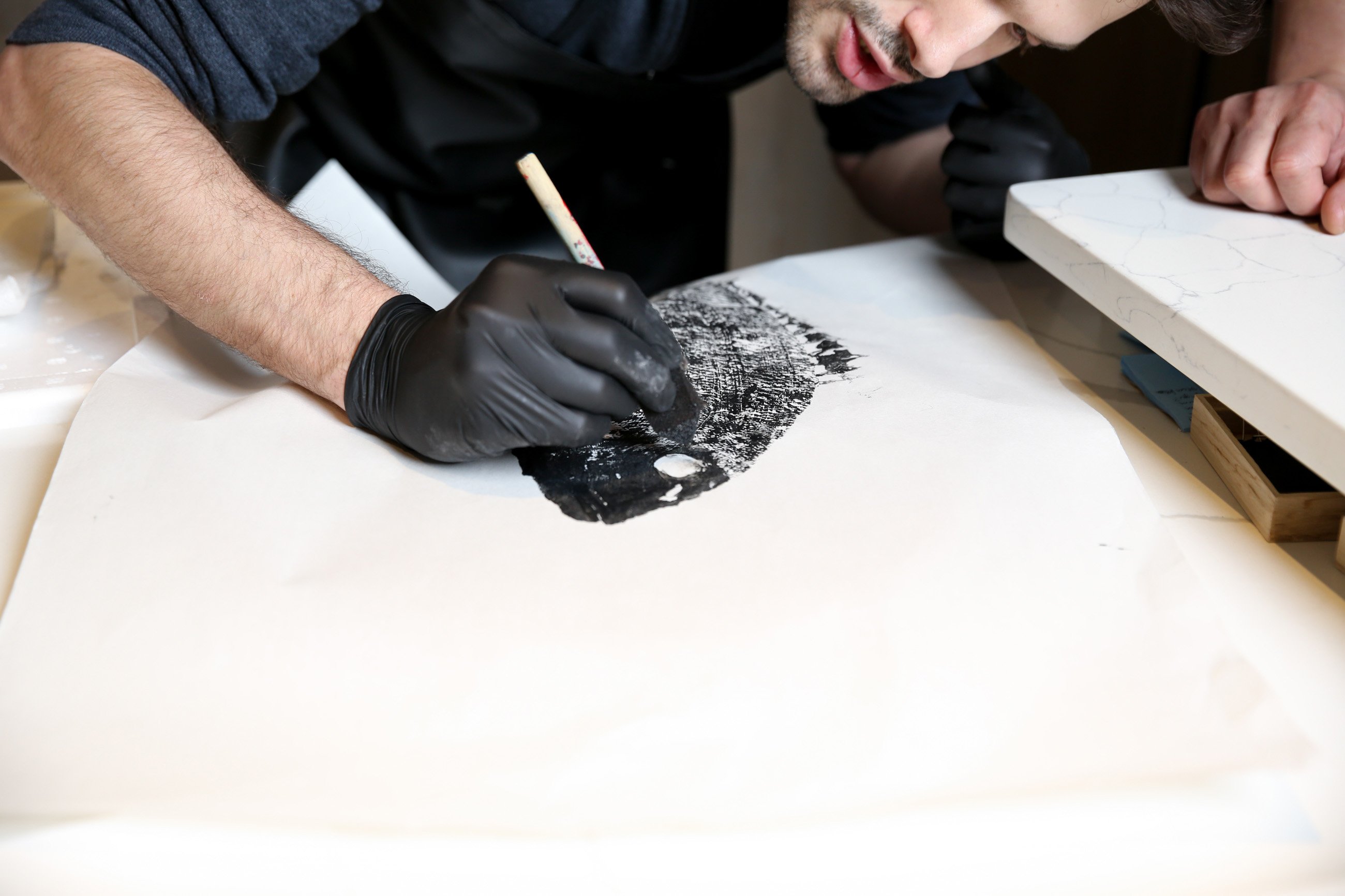
This article appears in the April 2025 issue of Washingtonian.

